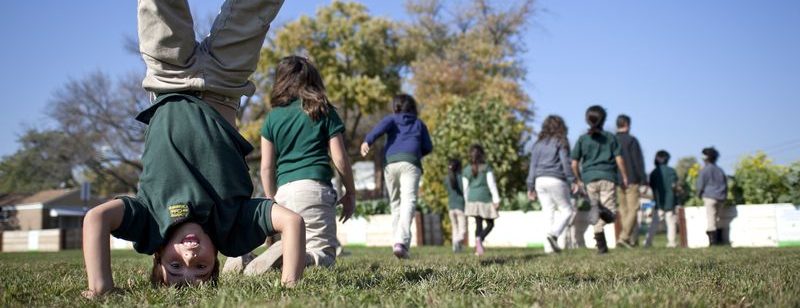As AGC makes strides towards breaking ground on its new campus of the future, it does so with a continued commitment to achieving the full Living Building Challenge (LBC) Certification — the most rigorous environmental sustainability standards on the planet. AGC is currently on track to be just the 25th project in the world (and the 1st in the Midwest at scale) to receive this cutting-edge certification. According to the acclaimed architecture and design critic Alexandra Lange, AGC’s new campus plan is:
“The most architecturally ambitious design I’ve seen in the U.S.”
Not only will this new campus be a leading environmental sustainability demonstration site, but it will be, first and foremost, an invaluable teaching and learning resource for our students, their families, and the entire community, acting as a lever for locally-driven community development. We also hope this multi-purpose campus will draw visitors from around the globe and serve a showcase for the values put forth in the Living Building Challenge framework, which is organized into seven key performance areas:
PLACE: We will devote half the six-acre campus to sustainable urban agriculture, community green spaces and food forests, and have a farm shop that will provide access to fresh fruits and vegetables for our neighbors.
WATER: We will achieve net water positivity by capturing precipitation, purifying water via natural processes and recycling used water on-site.
ENERGY: We will achieve net energy positivity by generating 105% of our energy needs via solar panels, geothermal wells and wind power.
HEALTH & HAPPINESS: We will provide a healthy built environment, including access to fresh air and daylight and connectivity to nature.
MATERIALS: We will use construction materials that are safe for all species through time and contribute to improved air quality.
BEAUTY: We will collaboratively develop a community-centric architectural design that will uplift the human spirit and generate pride for the southwest side.
EQUITY: We will address social and racial inequality in the world through providing health access, addressing environmental justice, enabling educational opportunity and spurring economic development.
At the heart of it all is the immersive educational opportunity this campus will offer the next generation of environmental leaders. Imagine young minds exploring the Energy Trail, for example, beginning in the transparently designed mechanical room, tinkering in the Solar Energy Learning Lab, and then heading out to the geothermal field with glass manholes for students to experience the inner-workings of renewable energy in motion. Energy dashboards will show students real-time energy usage, and motivate responsible action by connecting our behaviors to the power of our individual and collective impact. Bilingual educational signage throughout the building and schoolyard will call attention to eco features and will inspire children and visitors to carry sustainability into their homes and lives. Hosting tours, conferences and learning summits will motivate other schools, communities and policy-makers to adopt similar innovations and practices through learning from our model.
We hope you will stay tuned and continue to look for more information about the innovative ways this new living campus will work hand-in-hand with the community to elevate social justice, educational justice, and environmental justice while cultivating health, wellness, and food security for us all.
To learn more about our new campus and its dedication to a net-positive future, please visit: https://agcchicago.org/our-future/project-net-positive/


